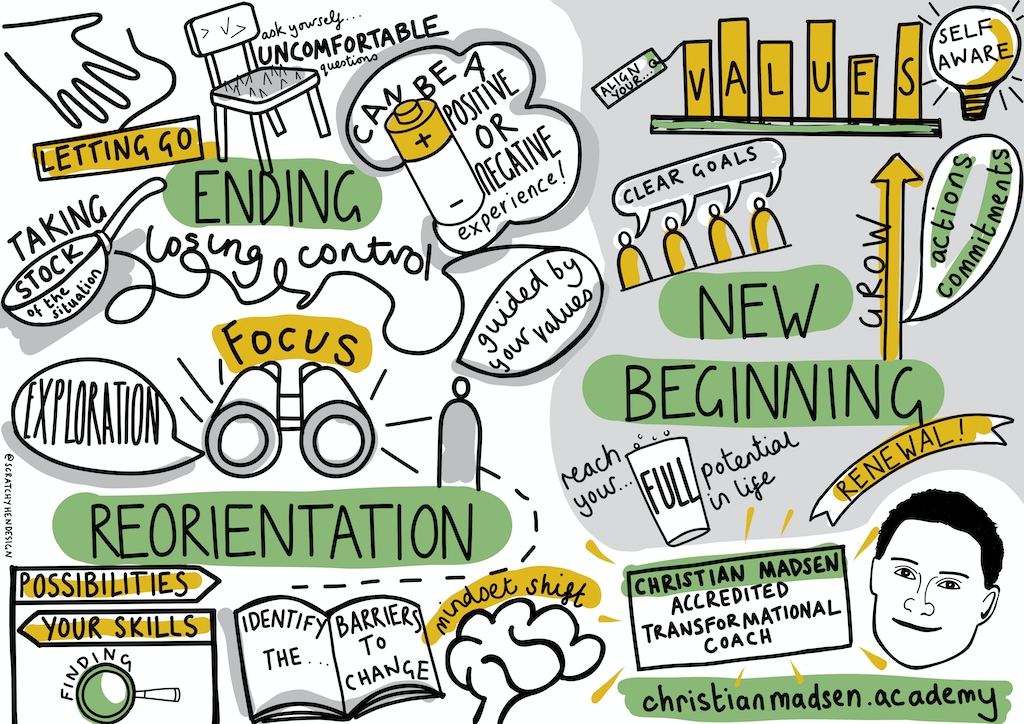A year of change.
What a year 2022 has been.
Some people have found it to be a strange year. A very unusual year for many.
Others have found the year to be very challenging with all its changes.
From continued post-COVID-19 adaptation to hybrid work with new ways of living and working, to the energy crisis in the world and high inflation, food and commodity prices to the war in Ukraine.
In some parts of the world, COVID-19 lockdowns are even still an ingrained part of the everyday life.
One thing we can say with certainty is that change is a constant in the world and it can happen very quickly.
Personally, I am optimistic and full of hope for the future despite a changing world and I believe that things will work out well.
I also reckon that there is no “sun without shadow”. As human beings we will experience struggles and challenges that we will learn from. It is part of life. That will make us value the positive, happy moments in life more and experience them even stronger.
So, what is change and transition all about? Let’s explore just that in the next.
What the differences between change and transition are.
Change and transition are often used interchangeably to mean the same thing. However, in fact the two words differ significantly.
Change is an external event or situation that takes place[1]. So, change is event or situationally driven and often happens immediately. Such events can for example be: a global pandemic like COVID-19, a new business strategy, a change in the leadership team, mergers and acquisitions, organisational changes, promotions, job changes, moving to a new city, critical illness or a divorce.
“It is when we are in transition that we are most completely alive.”
William Bridges
Transition on the other hand, is the human side of change. It is the inner psychological process that people go through when they internalise and come to terms with the new reality and situation that a change brings[1].
External changes can affect us very differently as individuals and therefore transitions can be challenging.
In the last year’s time, the biggest transition for me and my family has been our move to our new apartment in Copenhagen. Coming to terms with the new situation, settling in, finding our new routines, ways of life and adapting to new sounds, people and views takes time.
We have transitioned well. It is though a great journey that requires adjustments and adaptation.

Transitions can be perceived as a non-linear process involving three phases:
- Ending: Is when people become aware of what they are loosing and determine what is over and let go of the old that is ending[1]. It can be a loss of control and identity.
- Reorientation: In-between chaotic time of exploration and realignment between the old and the new. This is where adjustment and reorientation towards new possibilities happen. The old behaviours are shedded, new behaviours and skill-sets are developed and mindset-shifts happen[1,2].
- New beginning: Creating a new beginning and sense of renewal and recommitting to changes based on new understandings, values, attitudes and behaviours[1]. A fresh self and renewed identity are unveiled[2].
During these transition phases questions like ‘Who am I?’, ‘What do I want to become?’ and ‘What are my purpose and passions in life?’ become valuable to answer to unlock your potential.
Below you find the three phases of transition visually illustrated.

A special thank you goes to Jenny Parkington from Scratchy Hen Design for the brilliant illustration work.
In an interesting Havard Business Review article, Bruce Feiler, who is the author if the book ‘Life is in the Transitions: Mastering Change at Any Age’, describes how he interviewed hundreds of people about their biggest life transitions[2]. His research shows that a major life change happens to us every 12 to 18 months, on average[2].
Bruce Feiler also found that so-called huge “lifequakes” happen three to five times in a person’s lifetime and last up to 5 years[2]. So, that ends up with up to 25 years in transition, i.e. a large part of our lives.
Some of these lifequakes are voluntary and happy moments like having a child, while others are involuntary and unwanted moments like critical illness or loosing a job[2].
Bruce Feiler calls the above three stages of transition “the long goodbye”, where you mourn the old you; “the messy middle”, where you shed old habits and create new ones; and “the new beginning” in which you unveil your fresh self[2].
“Your life is a story of transition. You are always leaving one chapter behind while moving on to the next.”
Anonymous
I wouldn’t call the in-between time in the middle ‘messy’ rather chaotic because it can be a time of confusion, distress and fear. However, for some it can also be a time of optimism.
Transition Coaching can help create the time and space for you to think through the changes you face to help you achieve positive life and career transitions.
If these transition stages are compared to seasons in nature, we can visualise the stages in simple ways.
The leafs begin to fall of the trees in autumn (ending), winter comes with snow and rough weather (in-between time of reflection and exploration) and finally green emerges again from the woods in the spring (new beginning). It is amazing how nature has so many metaphors for transitions.
Let’s now next look into some further reading and inspiration about how to better handle transitions.
More inspiration and reading about transitions.
Transitions and change go hand in hand in life. It is really fascinating how we can become better at handling and undergo life, career and leadership role transitions.
In this section, I share two recommended books on transitions for further reading.
The first book is called ‘Transitions: Making Sense of Life’s Changes’, which was first published 40 years ago, but now comes in a new revised anniversary edition from 2019. It has been named one of the fifty most important self-help and personal development books of all times and I can attest to that.
It lays out a great roadmap for better handling human transitions in life, in organisations and companies.

The second book is the before mentioned book by Bruce Feiler called Life Is in the Transitions: Mastering Change at Any Age.
It is a great read about Bruce Feiler’s research from interviewing hundreds of people across 50 states about their major life transitions in the US.
The book also introduces the vision about the non-linear life, which corresponds well to the changed lives and work, which are combined in new ways for many people post-COVID-19.
To further expand on Bruce Feiler’s findings and interesting research, below is his 2022 TED Talk about mastering life transitions. It is definitely worth watching if you haven’t already and you want to learn more about how to better handle transitions with several tips, ideas and inspiration.
As the year 2022 now draws to an end and we transition into the new year it is a great time for reflection:
- What have you learned in the past year?
- What changes are you looking forward to making in the next month, six months and year of 2023?
I have now walked you through the different aspects of and differences between change and transition. When you undergo any shifts in your life, career or leadership roles, then I am here to partner with you as your Coach.
Here you can learn more about our Transition Coaching Programme.
When you begin a Transition Coaching Programme, we will work in a partnership to..
* Explore stages of transition to motivate you to recommit to changes based on new understandings, values.
* Create new perspectives to build your confidence, behaviours, skills and help you explore new possibilities.
* Become aware of where you need to be accountable to create action and get things done, to help you better achieve positive life and career transitions and experience valuable transformations.
Please feel free to contact me to learn more about Coaching.
References.
[1]Bridges, W. (1988) Bridges Transition Model. Bay Area: William Bridges Associates. Available at: Bridges Transition Model (wmbridges.com) (Accessed 25 December 2022).
[2]Feiler, B. (2010) Managing Someone Whose Life Has Been Upended, Harvard Business Review.

